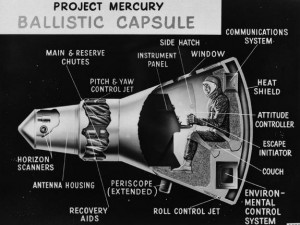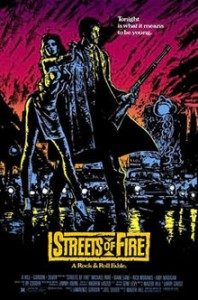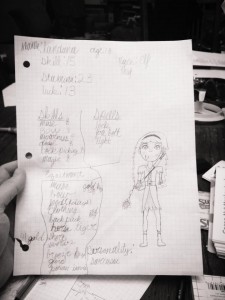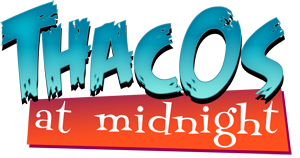One of the odd little things that makes me happy is staring at starship deckplans. I think I know the internal layout of a Broadsword-class mercenarcy cruiser from Traveller better than I know my own house, thanks to long hours of daydreaming that I was aboard one. In high school, I wished for a Scout Type S, and I missed a significant number of class hours in university designing starships for FASA’s Star Trek and WEG’s Shatterzone.
Something I especially enjoyed was creating clunkers and pink elephants, under-powered absurdities with more character than utility. These are the ships that end up sitting forever on the aftermarket, waiting for someone gullible or desperate enough to snap them up. They have checkered histories. My players once acquired a 120-year-old Lupus class scout in Shatterzone, and discovered another player character, long-forgotten in the frozen sleep chamber.
I know ships of this kind are popular with certain game groups, though published books and supplements generally gloss over the concept. It seems strange, especially in games like Traveller, where a starship is a sort of millstone around the party neck, a money pit that requires constant feeding just to cover the mortgage. The cheapest ships capable of interstellar travel are variants on the Scout Type S, and even those run for over 20 million credits. The game gives good explanations for why this is so. In the Traveller universe, starships aren’t like cars or even private [planes . They’re like ocean-going ships. Even the smallest of ships capable of crossing an ocean are a significant investment.
But you know, you can find ship hulks going for the price of a used Kia. You can find functional ships for the cost of a new Mercedes. Right now, there is a rusty “as is” 100-foot, 100-ton self-propelled barge for sale in Louisiana for $75,000. A new one can cost millions. Why isn’t there something similar in Traveller…?
In that spirit, I have worked hard to produce some of the cheapest functional spaceships possible for my Traveller, Star Wars, and Shatterzone games. Step on in to Honest Piet’s Used Spaceship Emporium and Scrapyard for the finest in previously enjoyed hardware! It’s not pretty, it’s not ready for combat, but it’ll get you from Point A to Point B… usually.
One of my more recent creations is the Tarkine-class Interstellar Barge for the Mongoose edition of Traveller. The specific example described below costs about half the price of a used Scout Type S, and you’re not beholden to the service. Of course, the ship will likely end up bankrupting you, but that’s what Traveller is all about, right?
Tarkine-class Interstellar Barge – The Albatross
The Albatross can be found for sale or rent in any frontier system. It doesn’t look like much, but it’s a Jump-capable ship that costs about as much as an orbital shuttle. It’s name is painted crudely in spray-paint over the rear cargo doors. Though the players might not know it, the Albatross is one of a class of ships that played a significant role in relations between two systems.
District 268 in the Spinward Marches is not formally a part of the Imperium, though the worlds enjoy regular trade and Imperial naval protection. The most densely populated world in the subsector, Forine, is heavily industrialized and advanced. Nearby Tarkine is an agricultural system. It is also well populated, but quite primitive by the standards of the Third Imperium (TL 7).
About a century ago, Forine has trouble feeding its own population. To this day, most inhabitants make do with a very plain diet designed to meet their minimum needs. About a century ago, localized famines were common. In an effort to take advantage of this situation and increase their own presence on the galactic stage, the government Tarkine entered into a ship-building deal with Forine. Forine provided Tarkine with Jump capable ships using technology that Tarkine facilities were able to maintain. In exchange, Tarkine shipped food to Forine at no cost for a period of 40 years. The result was the Tarkine class Interstellar Barge, or, as it is become known, “The Tarkine Folly.”
The gravitic drives usually seen in the Imperium were replaced with reaction drives – old-fashioned rocket engines. These required a lot of internal space to be devoted to fuel, so to maximize cargo space the two-person crew crams into a double-occupancy stateroom and a cockpit-sized “bridge.”
About 100 Tarkine barges were constructed. At 30.5 tons of cargo space for each, there was no way these ships could assuage a famine of any size. In practice they carried high-end spices and costly confections for Forine’s leisured class while the general population went hungry. Still, they did wonders for Tarkine’s politicians. “Look at this fleet of spaceships! We are now a galactic power!” was the line.
That rosy view soon took a hit. The barges did not carry enough fuel for a round trip, and had to be refueled at great cost at Fornine. The Tarkine government paid for the barges several times over in free cargoes and the cost of fuel, and they soon became a symbol of government shortsightedness and waste. About 60 years ago, Tarkine released most of the aging vessels to public sale. Tarkine barges now show up in odd places throughout the Spinward Marches, sometimes forced into unexpected roles, like traffic control or even customs inspection. They tend to be used by in-system traders, impoverished planetary governments…. or desperate adventurers,
Tarkine-class Barge
Hull: 100 tons, distributed, TL 7 Titanium (Hull: 2, Structure: 2)
Armour: None
Jump Drive A: Jump 1 (TL 9)
Maneuver Drive A: Thrust 1 (TL 7 Reaction Drive, 10 hours thrust at full fuel)
Power Plant A: (TL 8 Fusion)
Compact Bridge
Computer: Model 1, Rating 5
Electronics: Standard Sensors (-4 DM)
Fuel: 41 tons
(25 tons dedicated to Reaction Drive, 10 to Jump Drive, 6 to Power Plant)
Sufficient for 10 hours of 1G Thrust, one Jump 1, and six weeks of operation.
Up to three jump 1s are possible if reaction mass is consumed. Two Jump 1s reduces reaction mass to 6 hours of 1G Thrust, three Jumps reduces reaction mass to 2 hours of 1G Thrust.
Cargo: 30.5 tons
1 Double Stateroom
Software: Jump Control/1, Maneuver/0, Library/0
Construction Cost: 16.407 MCr (Includes 10% discount for standardized plan. Price also takes into account significant discounts for building lower tech components on a higher tech world)
Used Sale Price: 11.978 MCr for specific ship detailed below.
The Tarkine-class was built with thrift in mind. Contractors on Fornine used the most basic technologies possible to create a Jump capable ship. The barges have a primitive Jump-1 drive and rely on rocket thrusters for movement in-system. With only ten hours of reaction fuel, they must Jump as close to their destination world as possible. With careful budgeting and use of reaction fuel, a barge pilot can manage two or three Jump-1s without refueling, but suffer a serious reduction in maneuverability upon arrival.
The barges, as built, have sufficient life support for six weeks of operation. This is a precaution against misjumps that leave the ship at the edge of the system. The crew can wait for rescue. (Given the cramped quarters, tiny bridge, and lack of common space, six weeks aboard a barge would be a hellish ordeal.)
The stock barge is totally unarmed and unarmored. A few owners have fitted them with lasers or missile racks as a deterrent against piracy. However, as combat maneuvers quickly burn through the fuel (only enough for 10 rounds of combat with full tanks) most owners prefer to surrender or attempt to fight off a boarding action.
As noted, even the newest barges are 60 years old. This means players purchasing one can roll six times on the “Old Ships” table in the corebook, and receive a 6D6 reduction percentage reduction in the cost of the ship. I did this, and rolled a 27, and received the negatives effects “Library Data is erroneous” and “Increase maintenance costs by 50%”. I interpreted these as follows:
- To save costs, the barge computer was constructed with read-only memory. As such the library data in the computer is, at best, 60 years old. This does not effect navigation, but it means world data and political information is sometimes wildly inaccurate. Most owners simply use a portable computer for library data.
- The oddball mix of technology used to create the ships means that monthly maintenance costs are increased by 50%, or a total of 5050 cr
Monthly Costs
Fuel: 18500 (assuming 1 complete refill and power plant top up per month)
Maintenance: 5050
Life Support: 3000
Mortgage: 49900
Total: 78450 cr
Unless the players are very good at speculative trade or mercenary work, owning a Tarkine barge will always be a net loss. However, the ships are sometimes assigned to mercenaries or hired adventurers by patrons who simply need them to get to another system. The ships may also be a good investment for players with the money to invest in replacing the reaction drives with a gravitic drive. This substantially reduces monthly fuel costs and increases the utility of the ship. The addition of low passage berths and staterooms allows for a larger crew or paid passengers.

 I recently completed a short campaign of Monster of the Week. It… went places, but I’ll discuss that in a later post.
I recently completed a short campaign of Monster of the Week. It… went places, but I’ll discuss that in a later post.






